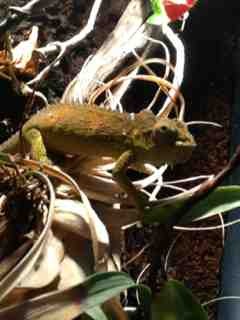Turningdoc
New Member
I have now kept this species for 9 months. Tried keeping as a pair and separate in 18x18x36 screen cages outdoor 24/7 under shaded lanai. Use Aracadia 6% fluoro tube lighting w incandescent basking bulbs. Mistking used twice a day for 1 min. Feed 1/4 crix, blue bottles, and baby supers when I can get them. Lost male due to eye infxn. Here is LuLu




I have found them to be relatively sedate and reclusive except when feeding when they are extremely active predators.




I have found them to be relatively sedate and reclusive except when feeding when they are extremely active predators.





